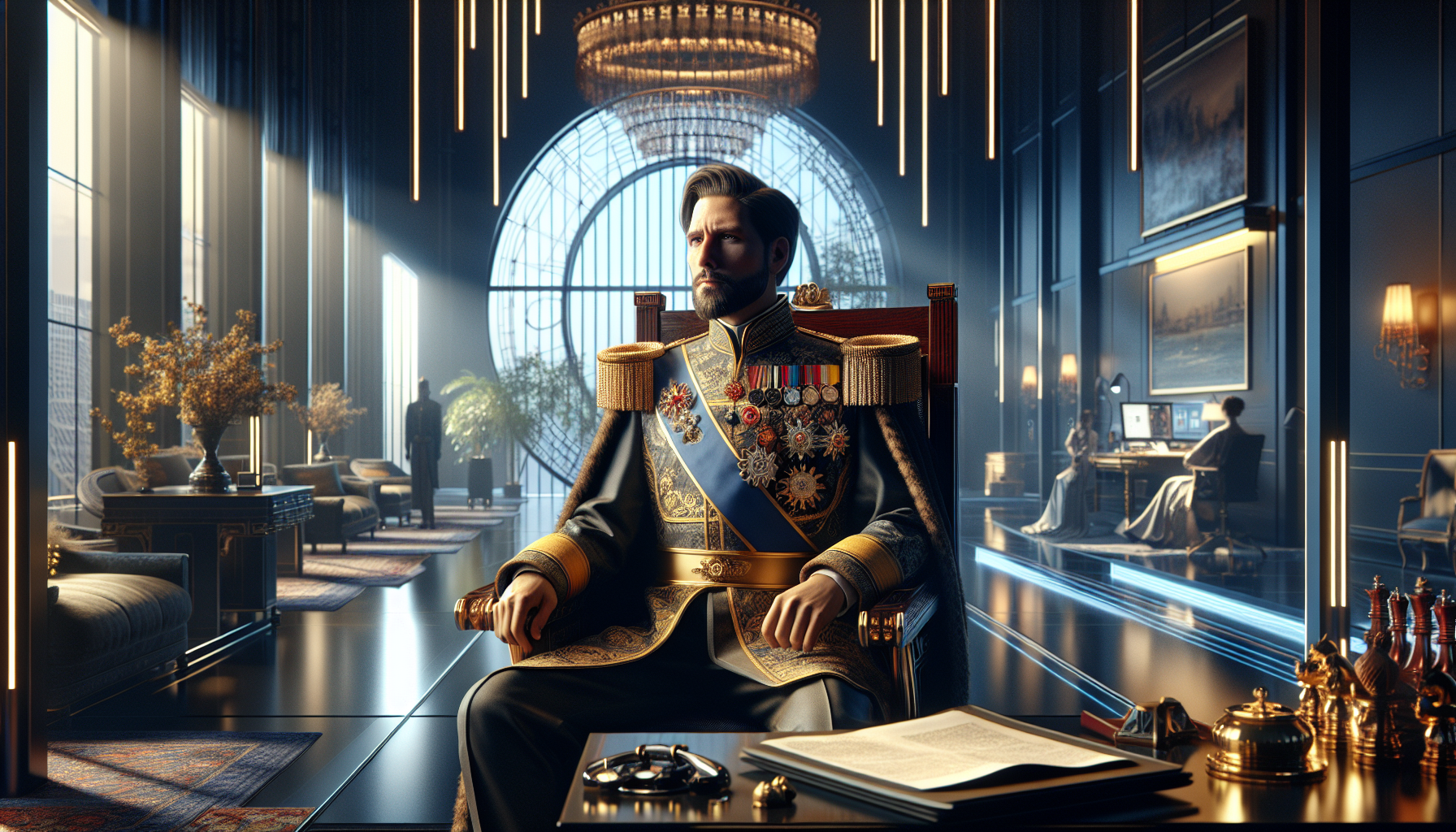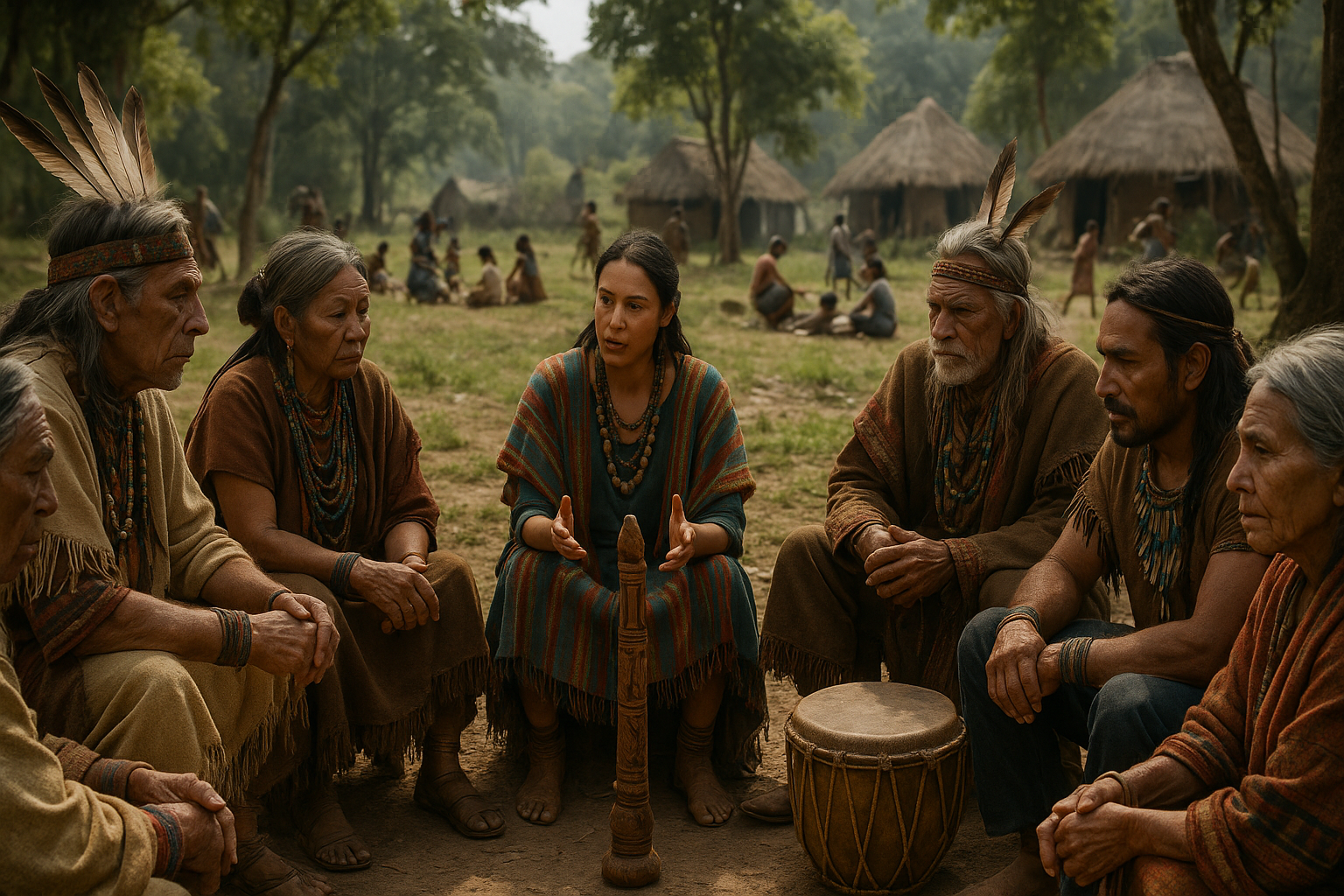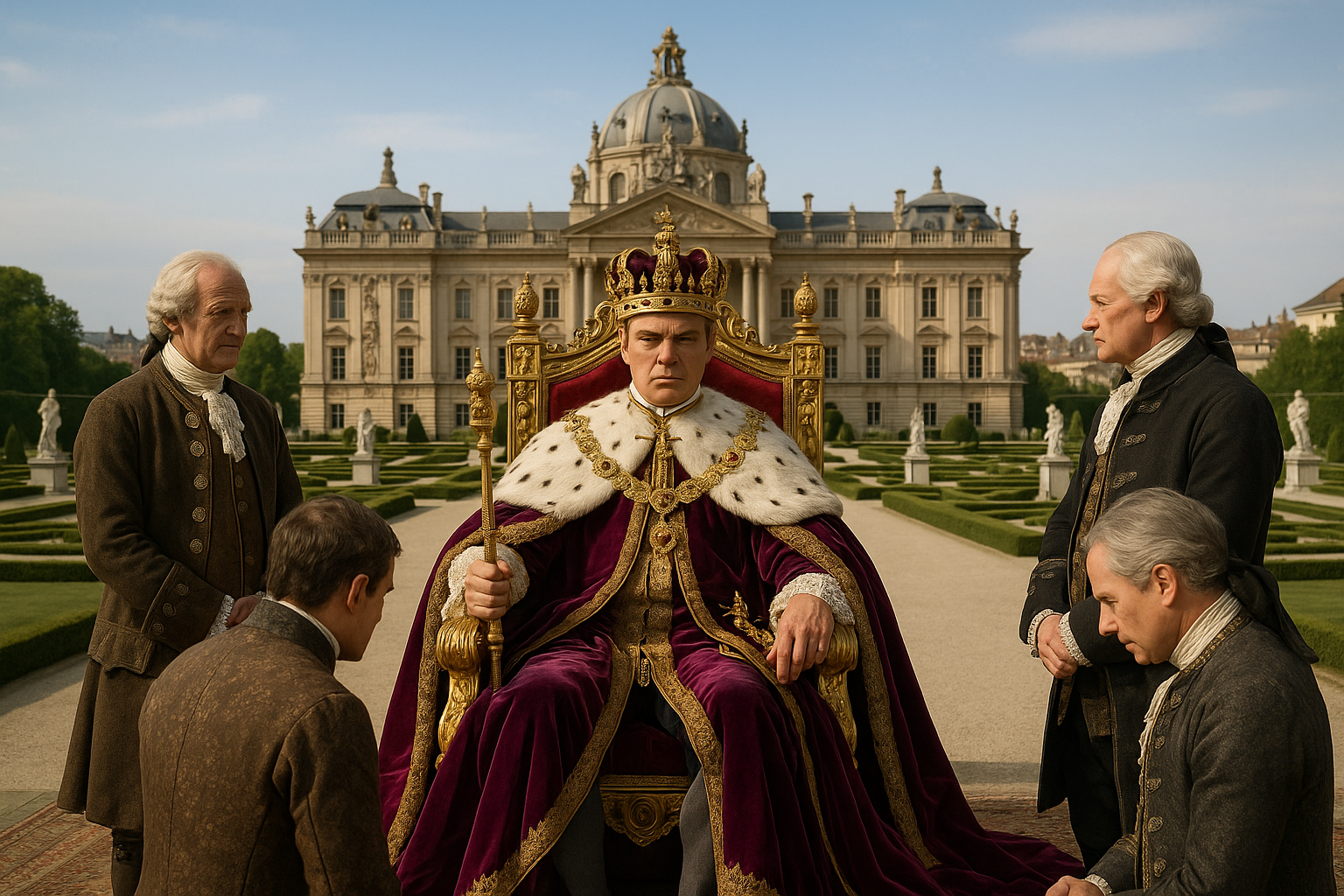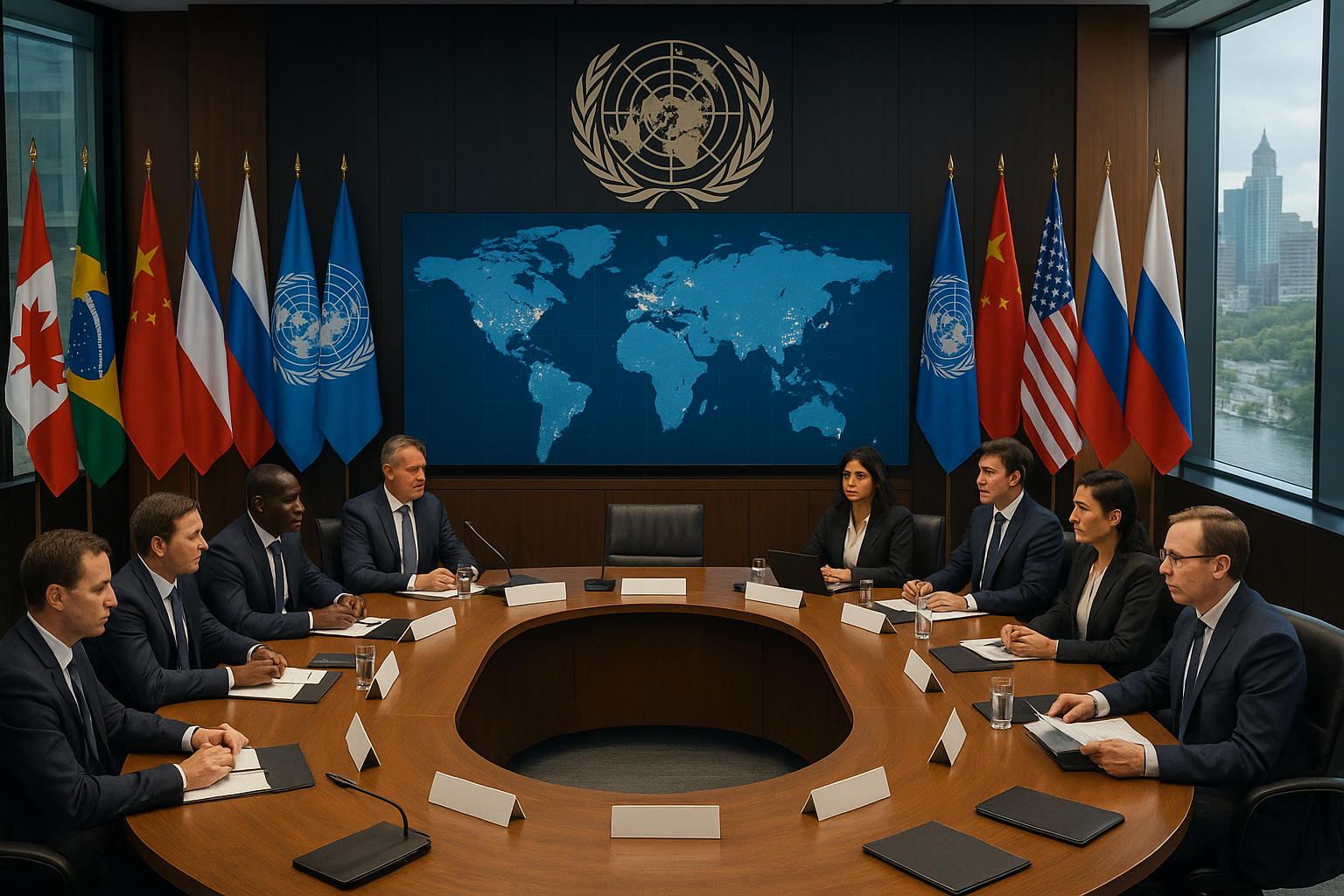In an era characterized by rapid technological advancements, shifting political landscapes, and an increasing push for democratic governance, the notion of absolute monarchy might seem like a relic of the past, confined to the pages of history books. Yet, surprisingly, absolute monarchies not only persist but thrive in the modern world, adapting to contemporary challenges while retaining their unique essence. How do these seemingly anachronistic systems of governance maintain their relevance today? This article delves into the fascinating world of absolute monarchies, exploring their evolution, their current role in the global political arena, and the intriguing ways in which they are reinventing themselves to fit into our modern society. 🌍
The survival of absolute monarchies in today’s world is a testament to their remarkable ability to adapt and transform. Far from being static, these regimes have embraced change, leveraging modern technology and media to enhance their influence and legitimacy. This article will explore how some monarchs are capitalizing on social media platforms to cultivate a relatable and approachable image, appealing to both their subjects and the global audience. Additionally, we’ll examine how these rulers are navigating the delicate balance between tradition and innovation, ensuring their enduring relevance. By analyzing case studies from the Middle East to Southeast Asia, we aim to uncover the strategies employed by absolute monarchies to maintain power and the diverse factors that contribute to their ongoing success. 📱
The Historical Roots of Absolute Monarchies
Absolute monarchies, systems of governance where a single ruler holds supreme autocratic authority, trace their roots back to various historical epochs. The divine right of kings, a doctrine prevalent in medieval Europe, posited that monarchs were chosen by God, giving them an unchallengeable mandate to rule. This divine legitimacy was crucial for maintaining control and stability in a time when religion wielded significant influence over everyday life. The monarchies of France, under Louis XIV, and Russia, under Peter the Great, are iconic examples of such regimes, where the rulers exerted complete control over state affairs.
However, absolute monarchies were not confined to Europe. They were also prevalent in other parts of the world, including the Middle East and Asia. The Ottoman Empire and the Chinese dynasties provide compelling cases of absolute monarchical rule outside the European continent. The sultans and emperors wielded significant control over their realms, often justified through a combination of military might and religious authority. These rulers employed elaborate systems of bureaucracy to manage their expansive territories, ensuring their commands reached even the farthest corners of their domains.
Despite their historical roots, the emergence of the Enlightenment and the subsequent revolutions brought about substantial challenges to absolute monarchies. The ideas of democracy, liberty, and equality began to take hold, questioning the legitimacy of concentrated power. Monarchies that could not adapt or reform faced significant upheaval, leading to revolutions or gradual transitions to constitutional forms of governance. However, some absolute monarchies managed to survive by navigating these turbulent times through strategic alliances, reforms, or sheer force. This adaptability has allowed them to persist into the modern era, albeit in evolved forms.
Key Features of Historical Absolute Monarchies
- Centralization of Power: Absolute monarchs centralized all political power, often diminishing the influence of nobility.
- Divine Right: Monarchs claimed their authority was derived from a divine source, making their rule unquestionable.
- Military Control: Strong militaries were crucial for maintaining power and expanding territories.
| Monarchy | Region | Historical Era | Key Monarch |
|---|---|---|---|
| France | Europe | 17th Century | Louis XIV |
| Ottoman Empire | Middle East | 16th Century | Suleiman the Magnificent |
| Qing Dynasty | Asia | 17th Century | Emperor Kangxi |
The Survival and Adaptation of Absolute Monarchies
In the modern era, absolute monarchies have managed to survive, albeit in forms that differ significantly from their historical antecedents. Today, these regimes must navigate the complex realities of globalization, international diplomacy, and the pressures of internal reform. The Kingdom of Saudi Arabia is a prime example, maintaining its absolute monarchy while gradually introducing social and economic reforms to meet the needs of its population. The Vision 2030 initiative exemplifies such efforts, aiming to diversify the economy and reduce its dependency on oil.
These modern absolute monarchies often justify their power by invoking tradition, stability, and the preservation of cultural identity. In a world where political upheaval is common, they present themselves as bastions of continuity and order. This is particularly true in regions where colonial histories and external interventions have left legacies of conflict and division. By emphasizing their historical and cultural legitimacy, these monarchies garner domestic support, enabling them to consolidate their power further.
Despite their attempts at adaptation, absolute monarchies are not without challenges. The advent of social media and increased global connectivity expose their citizens to democratic ideals, human rights discourses, and alternative governance models. This exposure creates pressures for political liberalization and more inclusive governance. In response, some monarchies have opted for limited political reforms, such as introducing advisory councils or allowing controlled political participation. However, these measures are often carefully orchestrated to ensure the ultimate authority of the monarchy remains unchallenged.
Challenges Faced by Modern Absolute Monarchies
- Demands for Reform: Growing calls for political and social reform from the populace.
- Globalization: The need to adapt to global economic and political trends.
- Technological Advancements: Managing the impact of digital connectivity and information flow.
Comparative Analysis: Absolute vs. Constitutional Monarchies
To understand the distinction between absolute and constitutional monarchies, one must examine their foundational principles and operational mechanisms. Absolute monarchies vest all power in the hands of the ruler, whereas constitutional monarchies distribute power between the monarchy and elected bodies, with the latter often holding significant legislative and executive authority. This division ensures a system of checks and balances, reducing the potential for autocratic rule and allowing for a more participatory form of governance.
The contrast between these two forms of monarchy is stark. In constitutional monarchies like the United Kingdom or Japan, the monarch’s role is largely ceremonial, with real political power residing in the hands of elected officials. This setup allows for greater political accountability and transparency, often resulting in more stable and democratic societies. Conversely, in absolute monarchies, the concentration of power can lead to abuses, although the stability they offer in certain regions may appeal to some populations.
Nevertheless, the boundaries between absolute and constitutional monarchies are not always clear-cut. Some monarchies exhibit hybrid features, where elements of both systems are present. For example, the Kingdom of Jordan maintains a constitutional framework, yet the king exercises considerable authority in matters of governance. These hybrid systems reflect the complexities and nuances of modern political landscapes, where traditional structures are often adapted to contemporary realities.
| Feature | Absolute Monarchy | Constitutional Monarchy |
|---|---|---|
| Power Distribution | Centralized | Shared with Elected Bodies |
| Monarch’s Role | Authoritative | Ceremonial |
| Political Accountability | Limited | Higher |
For a more visual understanding, watch this informative video: The Evolution of Monarchies – History Channel.
The Future of Absolute Monarchies in a Global Context
The future of absolute monarchies is intertwined with the evolving global political and economic landscape. As nations become more interconnected, absolute monarchies face the dual challenge of preserving their traditional structures while remaining relevant in a rapidly changing world. Economic diversification, education reforms, and technological investments are pivotal areas where these monarchies are focusing their efforts to secure their future.
One potential path forward for absolute monarchies is the gradual implementation of controlled reforms that align with global trends while maintaining core cultural values. By embracing aspects of modernization selectively, these regimes can enhance their legitimacy and stability. This delicate balance between tradition and modernity is crucial for their survival, as they strive to provide prosperity and security to their citizens.
Ultimately, the sustainability of absolute monarchies in a globalized world depends on their ability to adapt and innovate while preserving their unique cultural identities. This journey requires navigating complex political landscapes, engaging in diplomatic dialogues, and fostering economic partnerships. The monarchies that can successfully manage these dynamics may continue to play a significant role on the global stage, offering insights into the interplay between tradition and modernity in governance.
Strategies for Modernization
- Economic Diversification: Reducing reliance on single industries, like oil, to stabilize and grow economies.
- Education Reforms: Enhancing educational systems to prepare citizens for the demands of the modern workforce.
- Technological Investments: Embracing digital transformation to improve governance and economic efficiency.
To delve deeper into the topic, you might want to watch this insightful video: Monarchies in the Modern World – National Geographic.

Conclusion
In exploring the evolution of absolute monarchies within our contemporary world, we’ve embarked on a journey through time, culture, and political nuance. Our exploration has led us to understand how these seemingly antiquated systems of governance have managed to persist and even thrive amidst the modern demands for democracy, human rights, and global connectivity.
To recap, we first delved into the historical context of absolute monarchies, acknowledging their deep-rooted existence across various regions. We examined the archetype of traditional monarchies where rulers wield comprehensive power, and how these entities have adapted to maintain relevance. The analysis of countries like Saudi Arabia and Brunei provided concrete examples of how traditional authority coexists with global economic interests and technological advancements. This adaptability is crucial as these monarchies navigate the complex landscape of modern geopolitics.
Moreover, we investigated the role of cultural identity and national unity as pivotal factors in sustaining monarchic power. Monarchs often embody national history and pride, acting as symbols of continuity and stability. In regions where national identity is strongly tied to monarchic traditions, these systems can resist external pressures for change more effectively.
The discussion also highlighted the strategic reforms undertaken by some monarchies to modernize without relinquishing power. This includes embracing economic reforms, implementing limited political changes, and investing in public welfare to enhance legitimacy. The case of Jordan illustrates how a monarchy can engage in selective reforms to address domestic and international challenges while preserving its core authority.
Furthermore, we analyzed the influence of global networks and international relations on absolute monarchies. The global stage demands that these entities participate in diplomatic, economic, and cultural exchanges, which can lead to a delicate balancing act between maintaining traditional values and engaging with a rapidly changing world.
The significance of this topic lies not only in understanding these unique governance systems but also in appreciating the diverse ways in which political power can manifest and evolve. Absolute monarchies challenge our perceptions of modern governance and encourage a broader dialogue about political legitimacy and authority in the 21st century.
As we conclude, it is crucial to reflect on the broader implications of our findings. The resilience of absolute monarchies in a modern world raises important questions about the future of political systems globally. It prompts us to consider how tradition and modernity can coexist, and what lessons can be drawn from these experiences to inform governance structures elsewhere.
We invite you, dear reader, to engage with this discussion. Your perspectives and insights can further enrich the dialogue on the relevance and adaptation of absolute monarchies today. Whether through comments, sharing this article, or applying these concepts to your understanding of global politics, your involvement is invaluable.
**References:**
- The Guardian – Saudi Arabia’s Transformation
- BBC News – Brunei’s Modern Challenges
- Foreign Policy – Monarchies and Globalization
Toni Santos is a visual storyteller and artisan whose creations celebrate the poetry of the natural world. Through his thoughtful artistic lens, Toni captures the elegance of botanical forms, transforming them into meaningful expressions of symbolism, resilience, and timeless beauty.
His journey is deeply rooted in a passion for flora and the mysteries they carry. From the shape of a petal to the curve of a vine, each design Toni brings to life reflects a deeper narrative — one of growth, transformation, and harmony with nature. Whether crafting symbolic floral jewelry, enchanted botanical illustrations, or seasonal visual studies, Toni’s work evokes the quiet magic found in Earth’s most delicate details.
With a background in handcrafted artistry and visual design, Toni blends technique with intention. His creations do more than decorate — they speak, often inspired by ancient meanings behind flowers, the cycles of the seasons, and the invisible bonds between nature and spirit.
As the creative voice behind Vizovex, Toni shares this botanical journey with the world, offering curated stories, handcrafted collections, and thoughtful articles that help others reconnect with nature’s symbolism and artistic essence.
His work is a tribute to:
The quiet power of flowers and their messages
The art of visual symbolism in everyday life
The beauty of slowing down to see what’s hidden in plain sight
Whether you’re an artist, a nature lover, or someone drawn to the deeper meanings behind the natural world, Toni welcomes you to explore a space where aesthetics meet soul — one petal, one story, one creation at a time.





